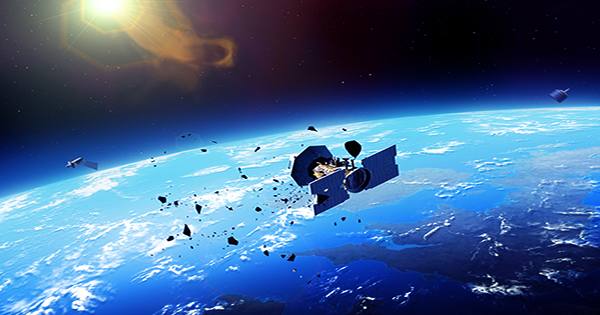Laurel, Maryland — According to NASA research, some ways of eliminating orbital junk could pay for themselves in less than a decade by lowering the costs and dangers incurred by satellite owners.
The study, which was released on March 10 by NASA’s Office of Technology, Policy, and Strategy, looked at the costs of various approaches to removing large and small debris, as well as the benefits they provided to satellite operators by reducing the number of avoidance maneuvers and losses of satellites damaged or destroyed by debris collisions.
The study was hailed by NASA as the most thorough cost-benefit analysis of orbital debris cleanup to date, noting that previous studies of debris removal had primarily emphasized sustainability and “moral responsibility” for doing so. These motivations “do not appear to be sufficient to incentivize immediate action,” the study said, “given the substantial upfront expenditures required to develop and deploy remediation capabilities and the potential delay in receiving benefits.”

The analysis determined the most efficient methods involved using ground- and space-based lasers to remove significant quantities of small debris that was between 1 and 10 centimeters in diameter. The analysis also examined the costs incurred by satellite operators as a result of debris. Both laser systems would create benefits that exceed their costs within a decade.
Other successful methods included “just-in-time collision avoidance” for the biggest debris objects, which involved moving such debris with rockets or lasers to avoid crashes with satellites or other debris. In the worst-case scenario, such methods could provide net advantages almost instantly, or within a few decades.
Other approaches considered in the research may take much longer to yield a net advantage. Reentry of bigger debris items could pay for itself in as little as 20 to 25 years, but in worst-case situations, it could take nearly a century. The research discovered comparable timescales for “sweeper” satellites that physically clear small debris. It also examined recycling debris by turning it into the propellant, but found breakeven times of a few decades, in part because of large upfront research and development costs for the technology.
The notion that such devices could be used as weapons were mentioned in the study as one issue with using lasers to clear debris. The research came to the conclusion that, “though perceptions may be harder to navigate,” the strength of debris-removal lasers would be too low, by a factor of 1,000, to be useful as a weapon against live satellites.
The report’s intriguing finding is that satellite owners currently incur only modest expenses as a result of debris. The model NASA created for the study, which was only applicable to American operators, put yearly expenses on such operators at only $58 million, with military and civil working satellites like Landsat and polar-orbiting weather satellites accounting for the majority of this number.
“We found that most satellite operators do not incur any costs from conjunction assessments or collision avoidance maneuvers,” said Bhavya Lal, NASA associate administrator for technology, policy, and strategy, in a speech at the American Astronautical Society’s Goddard Memorial Symposium March 10 that coincided with the release of the report. “The key takeaway here is that the risk to satellite operators need not increase at the same rate as orbital debris increases.”
However, she suggested that remediation approaches such as those studied by NASA should be explored. “Conventional wisdom has been that prevention is more valuable than cure, that debris mitigation is more important than remediation,” she said, but she cautioned that attempts to reduce the production of new debris will likely yield declining returns in the coming decades.
‘The problem is to evaluate the effectiveness of risk reduction technologies in a manner that allows apples-to-apples comparisons,” she said. “With such information, we can understand the most effective risk-reduction portfolio.”
Lal stated that prior to beginning a second part that will enhance the model and add even smaller debris, NASA intended to host a roundtable discussion with a number of stakeholders to get input on the study.













